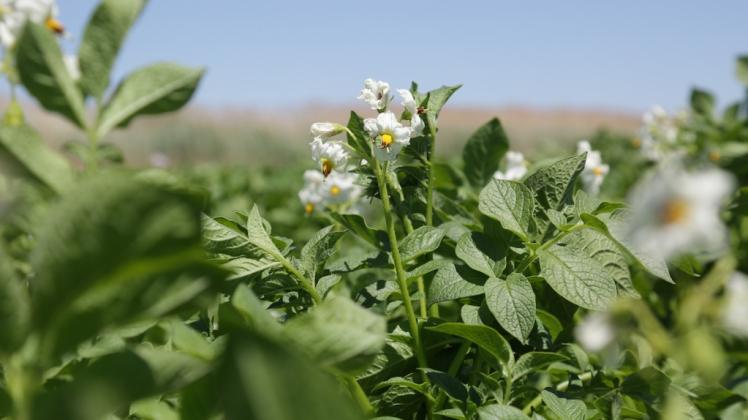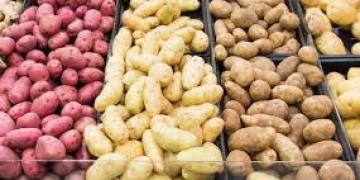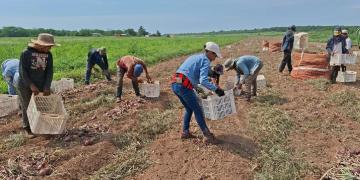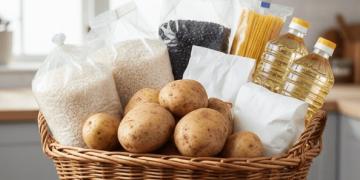Rusia: Potato 2020: how much to plant - plus 25% or minus 25%?
Sergey Banadysev, Doctor of Agricultural Sciences, Head of the selection program of the SSC “Doka - Gene Technologies

The situation is changing every day, but potato growing in Canada and the United States could be hit hard in 2020. Potato production could fall 25-30% due to closed restaurants, a sharp reduction in consumption of french fries and the economic impact of COVID-19. In North America, refineries are asked to plant between 70 and 75% of the usual, some regions more and some less. Area reductions relate to process potatoes, which are used to produce french fries and other frozen potato products. Such potatoes represent the bulk of potato production in Canada and the United States.
Tens of thousands of restaurants are currently closed in North America due to the risk of the spread of coronavirus. As a result, Canadians and Americans eat less french fries than usual. The immediate consequence of this is that the potato plants operated by McCain Foods, Cavendish Farms and JR Simplot have reduced the production of french fries, muffins and frozen potato products. Cavendish Farms, which operate a french fries factory on Prince Edward Island, instructed growers in the province to sell potatoes for other purposes. It is difficult to predict how long restaurants will be closed and when demand for fries will be restored. It is expected that these losses will be serious, at least until May, and it will probably take at least six months before they return to normal based on industry forecasts.
Catering accounts for 85% of all frozen potato sales. Volume reduction occurs at a time when the potato industry was ready for expansion. Just a month ago, processing plants planned to conclude a contract for a larger number of hectares of potatoes. Last year, Cavendish Farms opened a $ 400 million plant, and JR Simplot spent $ 450 million to double its size. An additional 3500 ha were to be planted this year to meet the needs of the new plants. And farmers have already invested heavily in this by purchasing seeds and fertilizers.
Retail demand for dehydrated potato products is growing rapidly
While food service manufacturers are suffering from loss of income and layoffs, retail customer service companies are facing the exact opposite. One example is Idahoan Foods Mashed Potato Plant. This manufacturer of dehydrated potato products said sales in March rose 250%. The company, based in Idaho Falls, is a leading seller of instant mashed potatoes in the United States. To meet growing demand, Idahoan Foods is seeking 100 additional employees.
Dutch Potato Association explores solutions to potato processing
The Nederlandse Aardappel Organisatie (NAO, Dutch Potato Association) expressed its support to its members who are facing unforeseen problems as a result of the COVID-19 crisis. On its website, the NAO admits that there are companies that cannot do the job, for example, in the table potato market, while in the catering market, demand has completely disappeared, and so the companies have stopped. “Surprise and uncertainty are the predominant feelings among the participants. We are doing our best to communicate with the government regarding the situation and are trying to minimize the damage, ”the Dutch potato organization said in a statement. A large stock of potatoes for industrial processing threatens to remain unsold due to falling demand, especially from the chips industry. This was discussed with the Minister of Agriculture and other industry partners. Solutions are currently being sought for the physical disposal of stocks before the start of the new season, as well as to determine the possibility of receiving a state subsidy.
Potato producers expect financial losses of between € 160 and € 200 million in the coming months due to the sudden “freeze” of about one million tons of potatoes. This creates serious financial problems for producers who specialize in long-term storage of potatoes. The food service industry (national and international) accounts for approximately 80% of the total sales of the potato processing industry. Over the past two weeks, demand has fallen by 90% due to the closure of public catering facilities.
Ethylene Generators Free
Restrain, a manufacturer and distributor of ethylene germination inhibition technology, has announced that it is now providing its equipment for free to interested potato storage companies. The only costs would be a Restrain sensor for € 195 and a Restrain ethanol consumption. The company says this is a goodwill gesture for growers who need to keep potatoes longer because of the COVID-19 pandemic crisis, which is currently destroying the industry in many major potato producing countries in Europe and other countries around the world.
The situation in Russia
Over the past month, technological news on potato growing has practically not appeared in the global information space, giving way to an analysis of the situation and market prospects in connection with the coronavirus pandemic. What to do with potatoes that cannot be processed into chips and fries, and how to plan the next field season? These are the main problematic issues in the contract production system overseas and in the EU. The planned decrease in industrial processing volumes by 20-30% in the 2020-2021 season will obviously be reflected in contracts for the purchase of raw materials in Russia, if the pandemic lasts until the end of spring, at least. Something is not heard from the processors in public about this, but we must understand that these are multinational companies with a common policy and operating principles, regardless of the location of the plant.
The consumption of fresh potatoes in retail and semi-finished products for home cooking has increased significantly recently throughout the world. However, how stable will this trend be in order to plan an increase in sown area? To meet the increased needs of the retail sector, the volumes of production that have developed in the large-scale sector are quite enough. In this regard, the appeal of the Ministry of Agriculture to increase vegetable production in 2020 by 25% (on this occasion, a special meeting was held in early April) attracts attention. You can increase it, but then what? Already marked by a decrease in income by 17% in the second quarter, it is also very likely that taking this into account and against the backdrop of forced unemployment, the constructive part of the population will significantly increase the production of potatoes and other vegetables in summer cottages and vegetable gardens. And this will not increase, but reduce the demand for potatoes in stores. The real sector of the economy expects from the government not fiery appeals, but clear and qualified measures to support and increase not so much production as purchasing power in the country. Exhorting retail chains to raise prices and appealing to their conscience is not enough. It is time to move to the professional level of macroeconomic regulation and adopt firm laws to limit trade margins on vegetables, and all other food products, on the annual justification of minimum purchase prices that guarantee cost-effective large-scale production in the country. But there are no expected changes and news on this subject. Therefore, one can only hope that existing market players and potential investors in the euphoria prevailing in the retail market will refrain from repeating the mistake of 2011, when everyone rushed to grow potatoes after the severe drought of 2010 and the resulting crop shortage and rising prices. Volumes then increased at once, but prices collapsed in such a way that everyone still remembers this.
Fuente: https://en.potatosystem.ru/kartofel-2020-skolko-sazhat-plyus-25-ili-minus-25/




